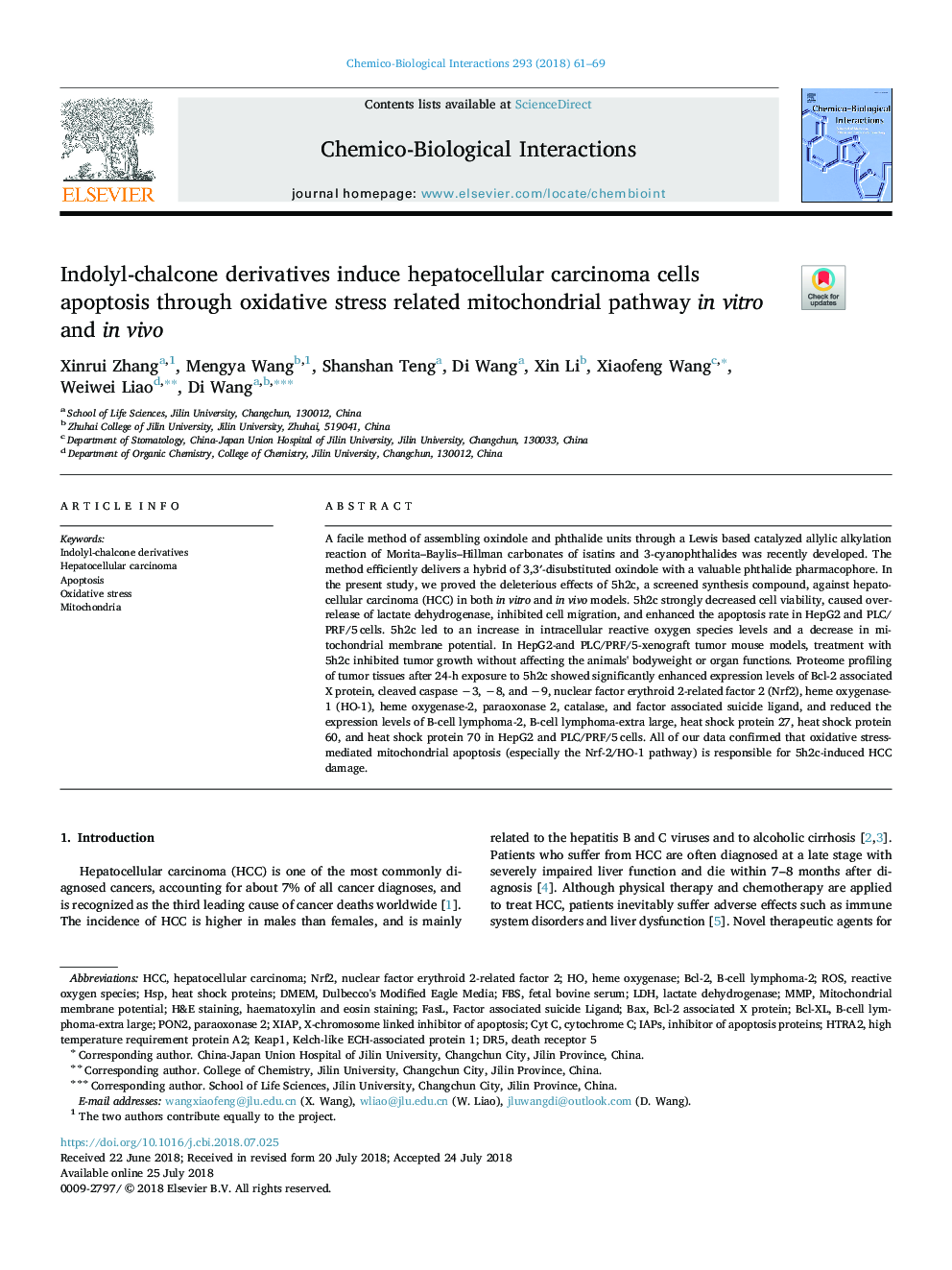| Article ID | Journal | Published Year | Pages | File Type |
|---|---|---|---|---|
| 8544533 | Chemico-Biological Interactions | 2018 | 9 Pages |
Abstract
A facile method of assembling oxindole and phthalide units through a Lewis based catalyzed allylic alkylation reaction of Morita-Baylis-Hillman carbonates of isatins and 3-cyanophthalides was recently developed. The method efficiently delivers a hybrid of 3,3â²-disubstituted oxindole with a valuable phthalide pharmacophore. In the present study, we proved the deleterious effects of 5h2c, a screened synthesis compound, against hepatocellular carcinoma (HCC) in both in vitro and in vivo models. 5h2c strongly decreased cell viability, caused over-release of lactate dehydrogenase, inhibited cell migration, and enhanced the apoptosis rate in HepG2 and PLC/PRF/5â¯cells. 5h2c led to an increase in intracellular reactive oxygen species levels and a decrease in mitochondrial membrane potential. In HepG2-and PLC/PRF/5-xenograft tumor mouse models, treatment with 5h2c inhibited tumor growth without affecting the animals' bodyweight or organ functions. Proteome profiling of tumor tissues after 24-h exposure to 5h2c showed significantly enhanced expression levels of Bcl-2 associated X protein, cleaved caspase â3, â8, and â9, nuclear factor erythroid 2-related factor 2 (Nrf2), heme oxygenase-1 (HO-1), heme oxygenase-2, paraoxonase 2, catalase, and factor associated suicide ligand, and reduced the expression levels of B-cell lymphoma-2, B-cell lymphoma-extra large, heat shock protein 27, heat shock protein 60, and heat shock protein 70 in HepG2 and PLC/PRF/5â¯cells. All of our data confirmed that oxidative stress-mediated mitochondrial apoptosis (especially the Nrf-2/HO-1 pathway) is responsible for 5h2c-induced HCC damage.
Related Topics
Life Sciences
Environmental Science
Health, Toxicology and Mutagenesis
Authors
Xinrui Zhang, Mengya Wang, Shanshan Teng, Di Wang, Xin Li, Xiaofeng Wang, Weiwei Liao, Di Wang,
